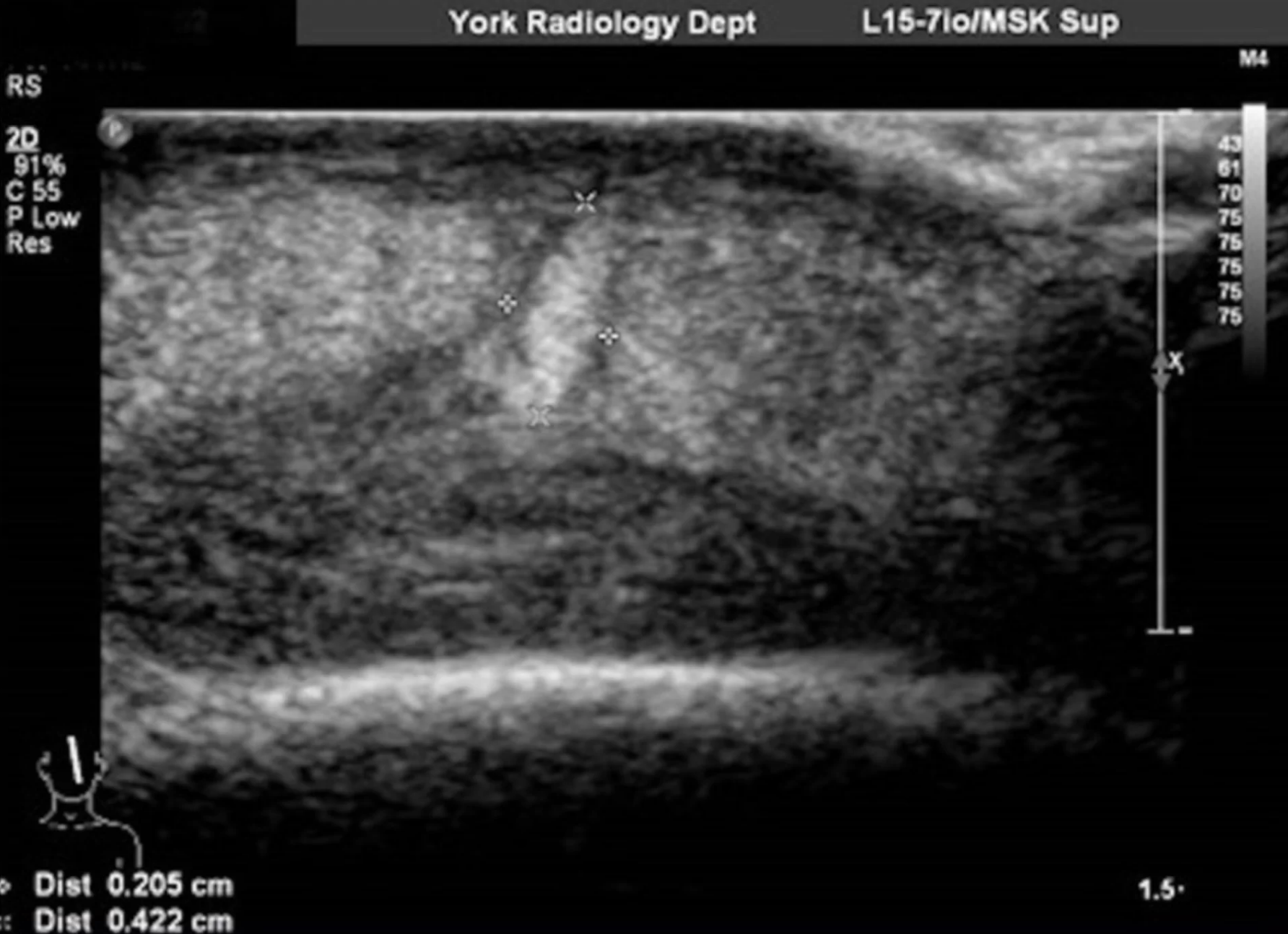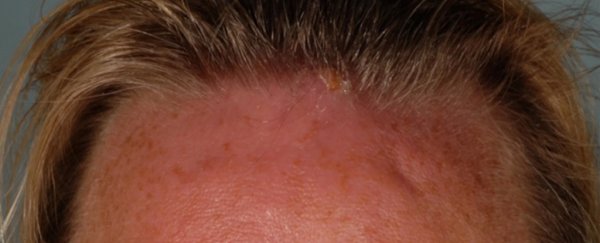At first, the emergency room doctors thought it was a simple, swollen insect bite.
The bump on the British woman's forehead didn't look too ominous, and she had recently returned home from a trek in the tropical rainforest of Uganda, where pesky insects are rampant.
The physicians on duty sent her home with a dose of antibiotics, but three days later, the 55-year-old woman was back with an even bigger lump now accompanied by pain; this time, the doctors realised she wasn't alone.
Looking closer at the swelling, the doctors saw a small opening that was leaking a bit of watery discharge, so they sent her for some further tests.
There, embedded in the thin skin of her forehead, was a globetrotter of a different sort, a rare species from the rainforests of Africa: a Lund fly larva (Cordylobia rodhaini).
Put more simply, it was a maggot. Living in her face.
 (Wade et al., BMJ Case Reports, 2019)
(Wade et al., BMJ Case Reports, 2019)
It was not what the doctors were expecting. As far as we know, Lund flies do not usually take up residence in humans, and these infections are rarely reported - only 14 cases published worldwide since 1970. In fact, this was only the second case ever recorded in the UK.
These flies are commonly found in the rainforest climates of sub-Saharan Africa, and they usually lay their eggs in sand or clothing. As such, most infections that do occur in humans don't take root on the face, but are more like to be found on the chest, back, stomach and thighs, where clothing is often placed.
After going over every detail of the woman's trip, it seems that this unlucky traveller contracted the infection after wrapping her hair in a damp towel that had been left outside to dry.
Usually, it takes about three days for the larvae to become activated by the warm body of its host. At this point, it then hatches and invades the thinnest skin available, leaving a little pinprick of a hole so that it can continue to breathe. As it begins to grow, it causes swelling, and in this particular case, sharp, shooting pains.
After about a week or so, the fully matured fly spreads its wings and exits its warm and cosy cradle. But while it's temping to just rip these creatures out once they have been found, that can actually cause further damage.
"The larva should not be forcibly removed through the central punctum because its tapered shape with rows of spines and hooks anchor it to the subcutaneous tissue," the case report explains.
And if the maggot bursts during a removal attempt, it can lead to an inflammatory reaction.
Still, the doctors weren't about to leave this migrant in the poor woman's head. The team started by applying petroleum jelly to the opening so that the insect was deprived of air. Only then did it begin to move closer to the skin, making it easier to remove.
All it took was a quick surgery and four days in the hospital before the woman was sent home, this time, without her fellow backpacker. According to the doctors, she made a full recovery and remains well.
This case was reported in BMJ Case Reports.
